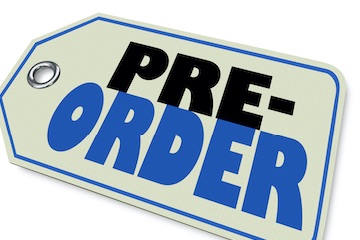Now that January sales are underway, it is time to reflect on the last quarter and plan. For retailers, the fourth quarter is typically the most profitable. Many of us use that money for re-stocking and surviving the oncoming quiet period.
Once their credit card bills arrive in January, consumers stop spending. Sales plummet. Holidays such as Valentine’s Day, Mother’s Day, and Easter can generate a bit of revenue, but what matters for most of us is how we did over Christmas, and how we must perform in the new year.
…it is time to reflect on the last quarter and plan.
Large retailers will pour over their sales data, researching customer trends and, already, planning for the next holiday season. Smaller merchants cannot afford to invest so much money in research, nor can we let major retailers take all the business.
But we smaller merchants can still analyze our sales for trends. Who are our customers? What did they buy? Be dispassionate and ruthless here. It doesn’t matter how much we like our stock lines or how much time we invest in descriptions and photos. If products do not sell, why keep them?
Dead stock
So once you focus on easier sellers, you have to dispose of the dead stock. You could try to sell it all at a deep discount to a dealer, or on auction platforms. It’s an opportunity to use the basic no-reserve auction on eBay. Just insert a shipping charge to ensure that you don’t lose money. But the key is to be ruthless. Dead stock is costing you money. It’s tying up capital and shelf space.
There are, however some key points to consider. First, the stock has presumably been in your warehouse for a while. It may have gathered dust and suffered shelf damage. Your description on eBay must reflect this. Otherwise you risk receiving negative feedback on a minor sale.
Otherwise you risk receiving negative feedback on a minor sale.
Second, check the concluding date and time of your auction. This is often overlooked; it can reduce your selling price. The last time I tried to buy something on eBay, I noticed many watchers but few bids. No doubt some were waiting until the last few minutes for a quick bidding war, which can result in a low or high price, depending on the excitement. In my case, the auction ended at 1 a.m. on January 1, an insane time to finish the process! The other bidders did not turn up, and I purchased it for much less than it was worth.
Once you have sold the dead stock, it is time to plan for the new year and even next Christmas. Consider offering pre-orders. It’s a topic by itself — researching suitable products, marketing to potential customers, and then communicating with those prospects about their requirements.
Pre-orders
In the ideal retail world, we would only carry what sells. Pre-orders can be a great help.
In the ideal retail world, we would only carry what sells.
For example, the local Star Wars fan group wants to buy the new action figures as soon as they are released. So the members have an arrangement with a retailer wherein they all place advance orders at a discount. The retailer knows exactly how many action figures to buy. He is paid as soon as the stock arrives. This scenario can apply to other niche merchants. A large retailer would not do it. Imagine how profitable your business would be if every order was fully sold and fully paid for.
It’s an excellent example of a smaller merchant prevailing over a big company that spends millions on research due to many customers and an extensive stock range. A small independent with a limited range and fewer customers can spend little on research and end up with better data.
The first step in setting up pre-orders is to resolve the payment process. Credit card companies don’t like a long delay between collecting money and delivering the goods. Nor do they like an extended delay between authorizing payments and receiving money from the cardholder. Find out what these limits are for your processor. If you plan for pre-orders that extend beyond these limits, work out how you would be paid.
I used to store customers’ credit card details and process them when the order was ready. This is no longer a good idea.
Some payment processors offer pre-payment processing, which is also suitable for recurring payments, such as subscriptions. The processors provide a token that securely encrypts card details and then processes at the appropriate time. Good processors will even update the card details as necessary. Make sure that you use such a processor.
Other key pre-order considerations include:
- Consider accepting deposits. Customers are less likely to cancel if they have paid a deposit.
- Limit the number of orders to ensure you are not overextended.
- Set realistic expectations with your customers regarding delivery dates.
- Finalize contracts with suppliers as early as possible.
- Always have enough cash to settle refunds or disputes.
- Finally, communicate. Keep customers informed.
The last one — communication — is the most important. When things go wrong (and they will) inform customers. Tell them what you’re doing to resolve. The more you involve them, the better chance you hang on to them.




